I Spent Years Trying to Save My Hair Before Finally Getting a Transplant
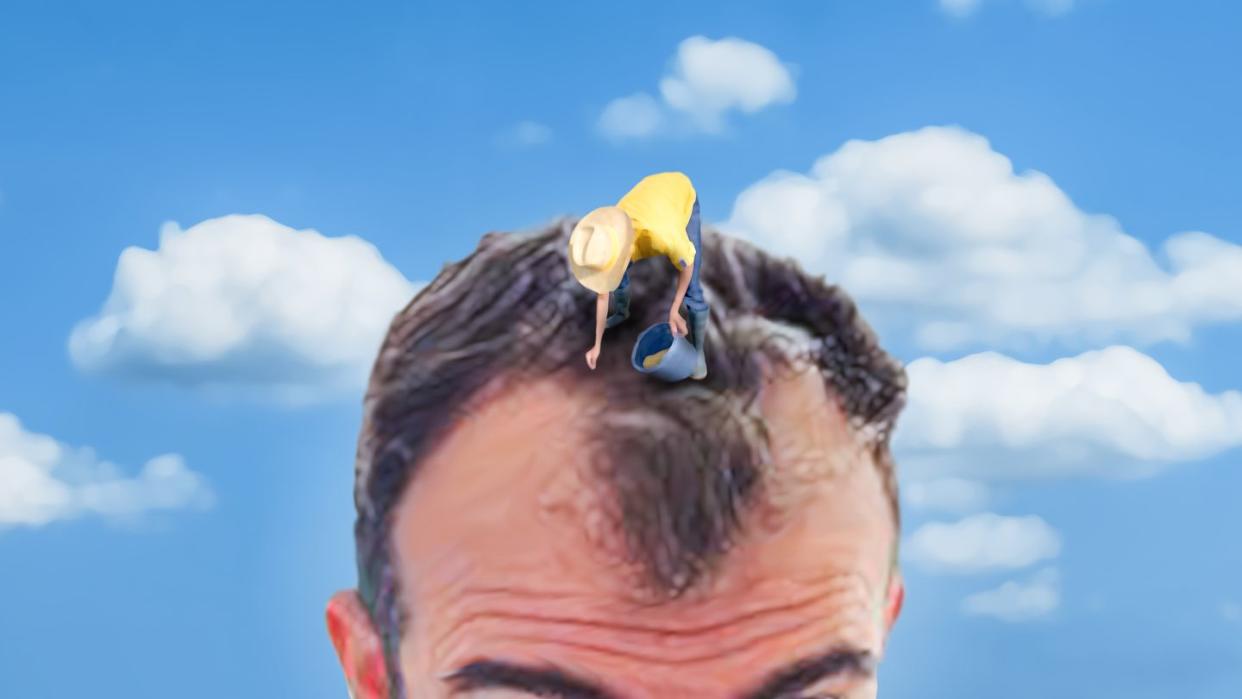
I haven’t been nice to my hair. Between desperately trying to give myself blonde streaks in high school and applying excessive amounts of Dep gel, I totally understand why it didn’t want to stick around. I know genetics played some part in it, but I can’t imagine Staten Island hairstyle trends helped the situation much. Either way, by the time I was approaching 30, my hair was starting to abandon me. The first time I realized the severity of the situation was at a gay club in New York, where a friend’s boyfriend thought he was paying me a compliment by telling me he liked my lighter-colored locks. In reality, he was seeing my scalp through my thinning hair. My hair loss had finally reached a point where brushing to cover up my thinning areas wasn’t doing the trick.
Although genetics plays a large part male pattern baldness, I started playing the blame game with myself. It’s my fault because I wear hats too tight, or because I don’t use conditioner, or I use the wrong kind of brush. I know—not necessarily useful. Regardless, I needed to take action. I was under the impression that Rogaine wasn’t an option for me because it’s more for hair loss on your crown and my issue was a receding hairline. I didn’t want to start on Propecia because I was worried about the potential sexual side effects. My brother told me about Nutrafol, a natural supplement he was taking to prevent his own hair from thinning. It may work for some guys. It didn’t for me. I felt dejected.
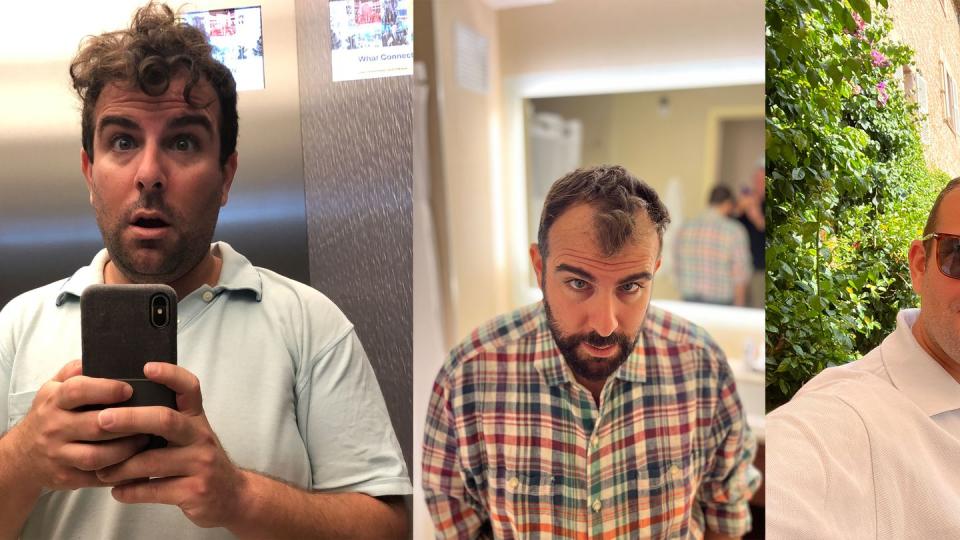
Although I still had some hair on my head, it seemed my fate of becoming Homer Simpson was just a few years away. I stopped looking for solutions and tried to make the best of the time I had left with my hair. There were good days where I was able to style it just right. But there were also bad ones, when Mother Nature seemed to get her rocks off by blowing my strategically styled strands all around my head forcing me to show up to wherever I was going looking like Albert Einstein. I started bringing a brush and a hat everywhere I went. I was living in limbo, and it was not an enjoyable experience.
Getting a hair transplant was floated plenty of times as I explored potential remedies. I always wrote it off; my situation didn’t seem severe enough to require surgery. But I started coming around to the idea when I got engaged. As we planned the wedding, I found myself making certain choices because of how self-conscious I was about my hair. Should we have the ceremony indoors? Should I wear a hat? Do I need extra time before the ceremony to make sure my bald spots are still covered? I spent more time worrying about how my hair would look in the photos than I did writing my vows. It wasn’t vanity I was dealing with. It was anxiety. My thinning hair was taking a toll on my mental health and I needed to find a solution. Two months after the wedding, in November of 2022, I was sitting in a chair as Dr. William Yates took a marker to my forehead to show me where my new hairline would start.
Prior to the procedure, Dr. Yates went over the two types of hair transplants. Follicular unit transplantation, or the traditional "strip" procedure, was the mainstay in hair transplant surgery for many, many years. This method surgically removes an area of skin (with the hair follicles) from the back of the scalp (donor area) and a surgeon sutures this area closed. This strip of tissue is dissected to obtain follicular grafts which are then transplanted into the areas of thinning in the front and top of the scalp. FUE (follicular unit extraction), on the other hand, is a minimally invasive technique where each hair follicle is isolated using high level magnification or robotic technology to punch out or make a core incision around the hair follicle and then gently lift hair follicle out for transplantation.
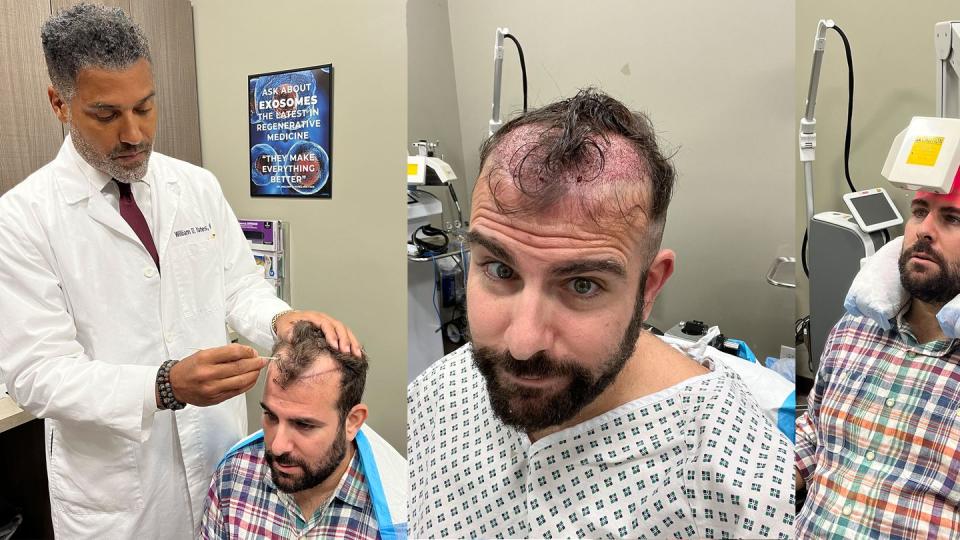
I decided on an FUE transplant. My appointment was 9 AM and I was expected to be there until mid-afternoon. Dr. Yates’s staff walked me through the itinerary: washing my hair, shaving the back of my head, extracting the follicles from the donor area, and then implanting the follicles into my bald spots. I was awake for the whole procedure. The only painful part was when they injected my scalp with a numbing agent. Once the drugs kicked in, my head became a garden and Dr. Yates (along with his staff) sowed the land.
It was one of the strangest experiences of my life. I sat there watching Netflix as a war between genetics and medical advancement played out on my head. My scalp hadn’t seen this much action since lice checks back in elementary school. I didn’t feel any of it. I made small talk with the staff throughout the whole thing. They ordered me a pizza and we went over any questions I had about the procedure and aftercare. I brought up rumors I heard that transplants “might not take” for certain people and asked what I could expect for my own results.
Dr. Yates explained that “some individuals have scarring alopecia and if this is not diagnosed prior to the procedure, this can affect the growth of the transplanted hair follicles. Transplanting into scarred areas is like planting in sand versus Georgia soil.” He also said that I “should expect at least 90 percent growth of the hair transplanted areas. The hair in the donor area is genetically different from the hair on the top of the scalp—it’s immune to the genetic balding process. So, when this hair is moved it stays and doesn’t thin.”
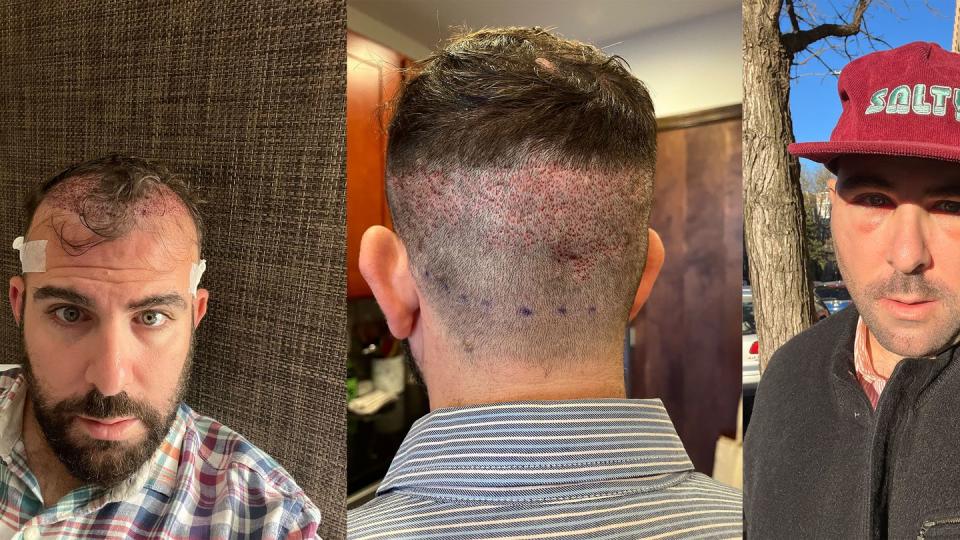
Everything was over around six hours later. I left with a goodie bag of aftercare products from the doctor’s own formulas, including shampoo, conditioner, and a metabolizer spray that I was told to use on my grafts every hour for the first week after the surgery. The doctor also advised that I start taking Propecia immediately and reassured me that the sexual side effects that I heard about were not as common as people make it seem.
The recovery process was mostly smooth sailing. The first few nights I had to cover my pillows with paper casing because the spots where the follicles were taken would bleed while I slept. I experienced some facial swelling that I was pre-warned about, a common bodily response to a procedure of that magnitude. When I showered for the first few weeks, I had to avoid letting the stream of water directly hit my newly implanted hair and instead used a cup filled with water to gently wash the area. There was very little pain. Once the swelling went down and the bleeding stopped after a day or two, it was mostly just a waiting game.
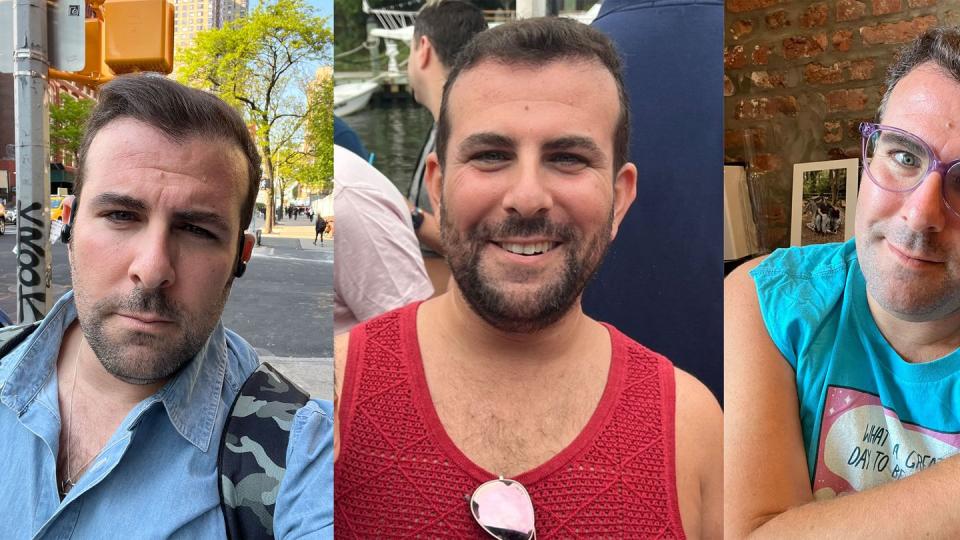
As the grafted area started to show growth, some follicles did fall out. That's normal. Not every graft will take, but most will. The waiting continued. By the four-month mark, I started to see a real difference. Since then, every before-and-after comparison I look at gives me a bit more confidence back. Nine months post surgery, I no longer fear the wind on my formerly bald spots. I see enough regrowth that when I wake up in the morning with bedhead, I don’t aggressively brush my hair to hide my scalp before leaving the house. Admittedly, I have this irrational fear that if I run my fingers through my hair or do anything to disturb it, all of the new strands will fall out—but that’s something for my therapist to help me sort out.
Getting a hair transplant isn’t an easy (or cheap) decision, but it’s one of the best things I could’ve done for myself. It’s more than what I see when I look in the mirror. It’s how I feel when I wake up every day and leave the house. It’s being able to have a conversation with someone without wondering if they’re staring at my bald spot. My mind travels back to that night at the gay club when my friend’s boyfriend first called attention to my thinning hair. That club is now closed. That friend and his boyfriend moved away. Yet that moment ignited a decade-long fight to keep my hair and now, thanks to Dr. Yates and co., that conflict can come to an end.
You Might Also Like

